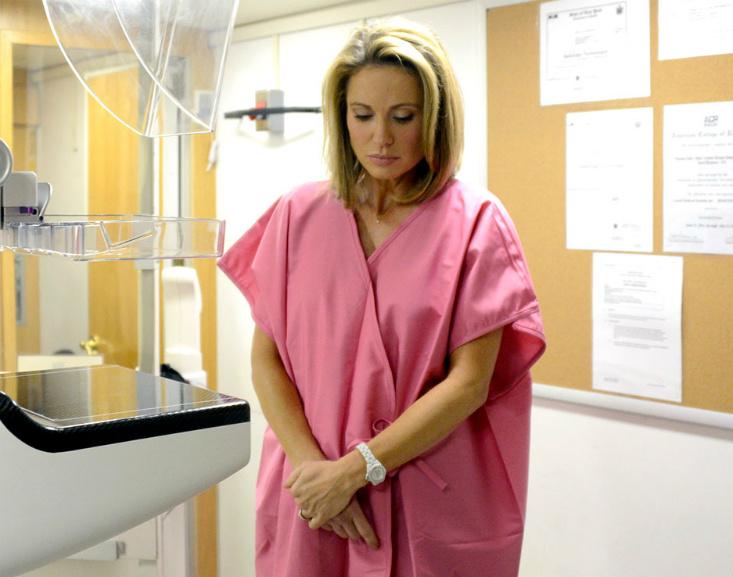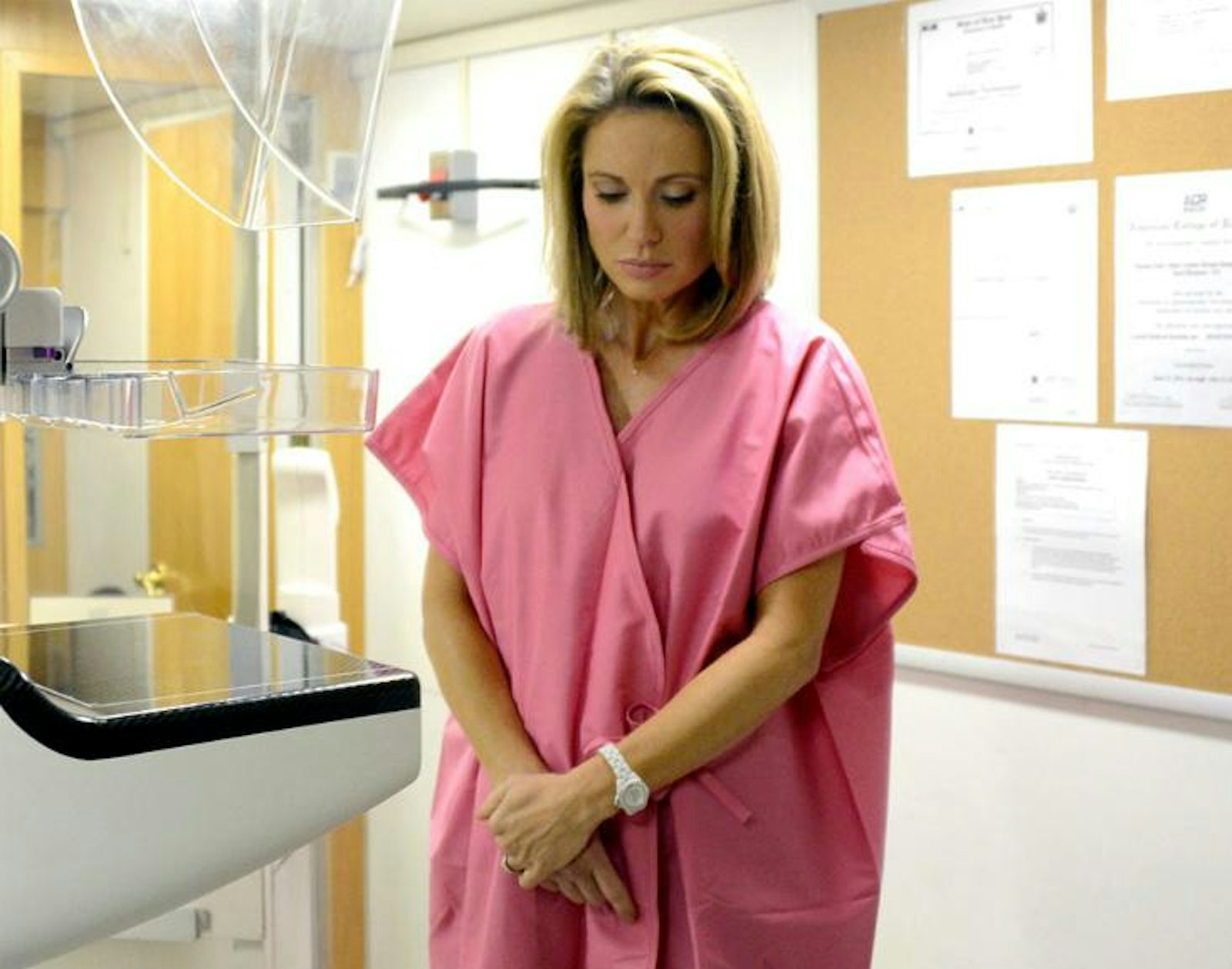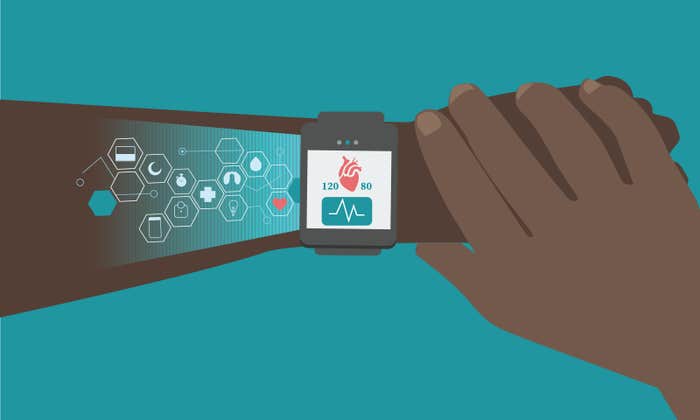
Last month, a 40-year-old woman went to have her first mammogram, an unexceptional event at a time when women are encouraged to have breast-cancer screenings early and often. What was unusual about this test was that it was witnessed not just by an X-ray technician but by millions of people sitting in their living rooms. The screening patient was Amy Robach, a correspondent on Good Morning America. Robach had been encouraged to do the on-air test by GMA anchor Robin Roberts, who had survived a breast-cancer scare herself in 2007. The segment seemed like simple encouragement for viewers to do their own regular mammograms, part of “GMA Goes Pink,” a month-long effort to raise breast-cancer awareness—until yesterday, when Robach announced that the mammogram showed she had breast cancer, and that she would have a double mastectomy this Thursday. The episode was presented as a triumph of medical science, an even more compelling push to get tested: Robach had no idea she was in grave danger, the screen had saved her life, and it might do the same for any woman watching. “I’m so grateful that I got that mammogram that day on GMA,” said Robach, sitting next to Roberts on a couch on set. “Robin’s words still echoing inside of me. If I got the mammogram on air, and if it saved one life, then it’s all worth it, she had said. It never occurred to me that life would be mine.” It’s an inspiring conclusion, and it certainly makes for great TV, but the show’s lesson about screening mammograms is highly misleading. In a world of limited medical resources, it may even be harmful.
Over the past few decades, the sales pitch for breast-cancer screening has been a great success. Survivors and other advocates have stamped the pink ribbon of breast-cancer awareness everywhere from female-oriented settings like GMA to the macho uniforms of NFL players to buckets filled with KFC chicken. The popularity of mammograms has gone up in sync. But while the outcome of the marketing is clear, the benefit of the screening itself is much less so. In fact, there’s a coalescing consensus that widespread mammography saves far fewer lives than was originally promised, and far fewer than widely believed. (In this article, I’m discussing only screening mammograms, which are given to women with no symptoms. Diagnostic mammograms, which are given to women with abnormalities or lumps, are absolutely effective.) A meta analysis put out by the respected Cochrane Review this summer flatly concluded that “studies which provided the most reliable information showed that screening did not reduce breast cancer mortality,” while “studies that were potentially more biased (less carefully done) found that screening reduced breast cancer mortality.” H. Gilbert Welch, a long-time expert on breast-cancer screening, writes that “Some of the original trials back in the ’80s suggested that mammography reduced breast cancer mortality by as much as 25 percent. This figure became the conventional wisdom. In the last two years, however, three investigations in Europe came to a radically different conclusion: mammography has either a limited impact on breast cancer mortality (reducing it by less than 10 percent) or none at all.”
“If I got the mammogram on air, and if it saved one life, then it’s all worth it, she had said. It never occurred to me that life would be mine.”
The big problem with screening is that it tends to find cancers that are not very dangerous—“indolent” ones that don’t grow quickly, will never metastasize to other organs, and might even go away on their own—while missing the truly deadly ones, which grow and spread too fast to get caught in any case. “I think the truth is that screening doesn’t find the cancers that are needed the most,” says Welch. “I’m afraid the absolute worst forms of cancer, those that are really growing rapidly and have a tendency to spread, tend to do so very early and there is not much you can do about it.” Meanwhile, screens pick up many harmless tumors, which are then often treated with chemotherapy, radiation treatment, or mastectomy. Those are some significant effects on health, and these “overdiagnoses” should absolutely be considered among the costs of screening. “Right now, we have women getting bilateral mastectomies for ductal carcinoma in situ, which is not a cancer,” says Otis Brawley, chief medical officer of the American Cancer Society. “It’s the world turned upside down.” Researchers are working on better ways to separate the killers from the plodders, but the science just isn’t there yet. For now, it’s hard to say whether any individual, like Robach, was actually saved by a breast-cancer screen.
If this mixed message about screening hasn’t made it to women, that is largely due to the relentless marketing push. For instance, the advocacy Komen for the Cure distributes materials saying that “Early detection saves lives. The five-year survival rate for breast cancer when caught early is 98 percent. When it’s not? It decreases to 23 percent.” It seems like an open-and-shut argument for getting screened but is actually horribly misleading: The survival rate for women who’ve been screened is high because the mammograms pick up many harmless tumors, which don’t kill anyone; the no-screening figure includes only those tumors invasive enough to get noticed without a screen. Welch says the “general message [about the unimpressive effects of screening] has been around for more than a decade. Why isn’t it getting more traction? The reason is that no other medical test has been as aggressively promoted as mammograms—efforts that have gone beyond persuasion to guilt and even coercion (‘I can’t be your doctor if you don’t get one’).”
“Mammography has either a limited impact on breast cancer mortality (reducing it by less than 10 percent) or none at all.”
There is of course another significant cost to screens: their actual cost. A Yale study found that Medicare spends $1 billion on breast-cancer screening a year, $400 million of it for women aged 75 and up. The lead author, Cary Gross, says that doesn’t mean the mammograms are necessarily a total waste, but that $400 million is a big tab “given that we don’t really know that it works or not.” Fees per mammogram were found to be higher in places that had adopted high-tech machines, though there wasn’t much indication they were more effective. In 2009, an expert panel gave a recommendation (which was not widely followed) that non-high-risk women be tested biennially instead of every year, and starting at age 50 rather than age 40—which would exclude young women like Robach. A study last year found that if all patients followed those recommendations, it would save the industry $2.6 billion per year, even while catching more cancers and decreasing the rate of false positives.
The surprising inefficiency of mammograms doesn’t mean they need to end, but that they should be reasonably evaluated, not treated as our divine shield against cancer, administered to everyone with breasts, and paired unquestioningly with the most aggressive treatments available. But that idea doesn’t coexist happily with some especially American ideas about ourselves. We are consumers, and are used to the idea that consuming more is better. We’re customers, who are always right, and don’t take kindly to doctors who think they know better. No one wants to feel their doctor or insurance company to be scrimping for cash, but it’s hard to avoid the reality that there are limited pots of money for buying all the medicine and treatments we all want. It’s time to stop repeating mantras like, “If it saved one life, then it’s all worth it,” and figuring out if we should fight this battle in the war on cancer with more brains, rather than just more aggressive treatments.
Amos Zeeberg is the digital editor of Nautilus.
























